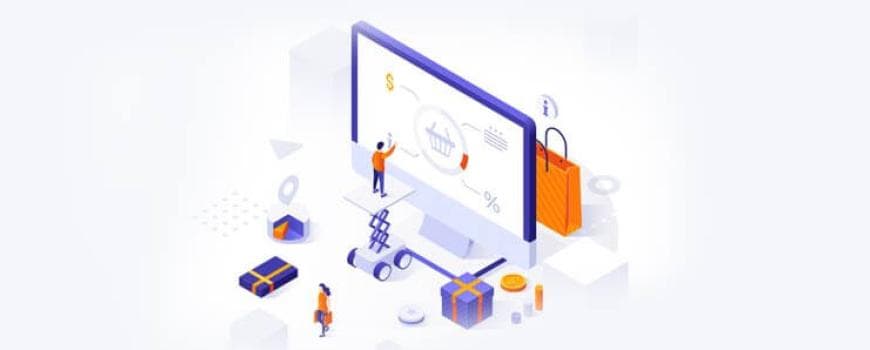Navigate the complexities of Diverter procurement with Applexus’ Diverter Dashboard
18 July 2023


Anoop Chandran
Director - FunctionalAnoop Chandran is a seasoned SAP IS-RETAIL Consultant with 17+ years of experience. As a Senior SAP Techno-Functional Consultant, he has successfully completed seven full implementations...
In the world of retail, every penny counts. For large-scale retailers dealing with a vast array of products from numerous vendors, even a slight price difference per item can exert a substantial impact on their bottom line. This is particularly true for high-volume, low-margin businesses like groceries, where optimizing procurement becomes crucial for maximizing profitability. Retailers are no strangers to the bustling ecosystem of vendors, each providing a stream of products that grace their store shelves. It's a continuous process where purchasing managers diligently procure items every week to keep their inventory intact, meticulously planning for seasonal surges in demand. Amidst this heaving scene, exists two distinct types of suppliers: regular vendors and diverters. Regular vendors are the traditional, established suppliers that retailers commonly rely on for their product needs, while diverters represent a different breed of suppliers who offer a price point advantage over regular vendors.
Diverters, the intermediaries in the retail supply chain
Retailers often encounter challenges in buying directly from manufacturers, mainly due to higher costs and the need to purchase in large quantities. Hence, they depend on diverters who provide weekly price catalogs along with the available stock. The diverters purchase products in bulk directly from the manufacturers and skillfully stock them in their expansive warehouses for resale. Diverters hold the advantage of negotiating lower prices when purchasing in bulk from manufacturers. This translates to significant cost savings that can be passed on to retailers, enabling them to procure items at reduced prices and bolstering their profit margins.
Diverters typically offer deals on smaller quantities of items, such as 10 to 100 cartons, at a lower price. This price point advantage is what sets diverters apart from regular vendors and makes them an attractive proposition for retailers. For example, if a chocolate manufacturer sells a packet for $10 to a retailer, a diverter can purchase 1000 cartons from the manufacturer at say $8. The diverter can then offer 100 packets to the retailer for $9, resulting in a profitable arrangement for both parties. Often reserved solely for diverters, these exclusive opportunities further enhance retailers' purchasing power. By capitalizing on this, retailers can tap into a lucrative avenue for increasing their bottom line and also reduce the burdensome costs of extensive warehousing.
Addressing the challenges of purchase managers

In the retail industry, multiple diverters operate, and prices may vary depending on the diverter. Selecting the most suitable diverter can be a challenging process for retailers as they navigate through numerous items to find the right vendor. Fluctuating prices can impact procurement budgets and profitability, requiring constant monitoring and proactive decision-making. Procurement professionals tasked with dealing with diverters operate within a narrow window of time. They often face the daunting challenge of sifting through a complex web of information and calculations within a tight timeframe, evaluating crucial data points like volume, price, and stock availability. The ability to make informed purchasing decisions quickly becomes the key to success here. Moreover, diverters are not the sole consideration in the procurement process. Buyers must also juggle volume discounts and deals offered by regular vendors, further complicating the already intricate decision-making landscape.
SAP, renowned for its comprehensive enterprise resource planning systems, has long been a go-to solution for streamlining and optimizing procurement processes. However, when it comes to effectively managing the complexities of diverter procurement, a significant gap emerges within standard SAP solution. The SAP solution would require an extensive setup of master data, including Purchase Info Records (PIRs), to effectively compare prices and assess product offerings. However, a significant hurdle when dealing with diverters, is the frequent change in their product portfolio, often on a weekly basis. This dynamic nature demands an innovative solution that can address these challenges and cater to the specific demands and complexities associated with diverters and regular vendors.
Introducing Diverter Dashboard – Applexus’ innovative retail solution for procurement and cost optimization
Our innovative solution, Diverter Dashboard, is transforming the retail procurement landscape by applying intelligent automation on supply chain data and pricing data from various diverters. To illustrate the intelligent automation of the Diverter Dashboard, let's consider a scenario where a retailer requires 100 cartons of chocolate based on their forecast. If Diverter 1 can only meet 50 cartons at their quoted price of $8 per carton and Diverter 2 can meet 100 cartons at a quoted price of $8.5 per carton, the application will automatically select 50 cartons from Diverter 1 and the other 50 from Diverter 2 thus effectively optimizing for price and quantity.
With its user-friendly features and data-driven approach, Diverter Dashboard enables retailers to optimize their procurement strategies, reduce costs, and gain a competitive edge in the market. Buyers can effortlessly navigate the Diverter Dashboard App, selecting items by department and applying filters to refine their search. Behind the scenes, Diverter Dashboard performs a comprehensive analysis by comparing deals, original vendor prices, inventory levels, demand forecasts, and more.
While retailers often collaborate with a few diverters, Diverter Dashboard expands the possibilities by offering a vendor comparison feature. This functionality allows retailers to assess the potential savings and benefits of onboarding additional diverters, providing recommendations for diversifying and optimizing their supplier network. Additionally, Diverter Dashboard can also automatically create the entire master data including the purchase info records when a new buyer is onboarded.
Fig. 1 - Buyer selection screen in creating Diverter Purchase Order

The Diverter Dashboard serves as a centralized hub, providing buyers with a comprehensive and intuitive interface to manage the complexities of working with diverters. Let’s explore some of the key features and see how it streamlines the complexities of working with diverters, maximizing cost savings and efficiency:

- Centralized procurement hub: The Diverter Dashboard serves as a centralized hub, bringing together all the essential procurement functionalities in one place. Buyers can efficiently manage diverter procurement, vendor comparisons, and purchase order creation within a single, intuitive interface. The dashboard allows retailers to compare multiple diverters at once, including their prices, product offerings, and past purchase history.
- Intelligent automation: The Diverter Dashboard applies intelligent automation to supply chain data and pricing information from various diverters. It automatically analyzes and selects the optimal diverter for each item based on factors such as price, quantity, availability, and forecasted demand.
- User-friendly interface: The dashboard offers a user-friendly interface that enables buyers to navigate through the complexities of diverter procurement with ease. The screens and features for managing purchase orders, material selection, and diverter comparisons are intuitive, enabling users to quickly leverage the full functionality of the Diverter Dashboard.
- Analysis and real-time price comparisons: The dashboard performs a comprehensive analysis by considering various data points such as volume, price, inventory levels, demand forecasts, and more. It also displays the history of the past three purchase orders, helping buyers in evaluating prices and percentage savings. This feature enables retailers to identify the best pricing options for their procurement needs.
- Purchase order management: Buyers can easily generate purchase orders, customize them based on department and material, and finalize them for multiple diverters simultaneously. The dashboard also provides details of finalized purchase orders for each diverter and enables the creation of multiple diverter purchase orders.
- Integration with the Fiori platform: The application integrates with the Fiori platform, enhancing the user experience and providing a seamless and reliable solution for retailers. The integration ensures compatibility and accessibility across different devices and platforms.
- Compliance and contract management: With the Diverter Dashboard, retailers can streamline compliance and contract management processes. The solution enables efficient tracking and management of contractual agreements, terms, and conditions with diverters. This feature ensures adherence to regulatory requirements and promotes healthy vendor relationships.
Conclusion
The retail industry operates in a fast-paced environment where efficient procurement processes and optimized supply chains are essential for success. However, navigating the complexities of supplier selection, price comparisons, and order management can be challenging and time-consuming. Diverter Dashboard proves to be the go-to solution for these retail procurement challenges. By utilizing the power of this innovative application, retailers can overcome supply chain issues, streamline their procurement operations, and make informed decisions that drive profitability.
Diverter Dashboard revolutionizes the way retailers interact with suppliers and manage their procurement processes. With its real-time price comparisons, comprehensive supplier insights, and user-friendly interface, retailers can quickly identify the best pricing, quantities, and suppliers for their needs. Furthermore, Diverter Dashboard addresses supply chain inefficiencies by automating key procurement tasks, eliminating manual calculations, and providing seamless order management capabilities. The application's integration with the Fiori platform enhances user experience, making it an intuitive and reliable choice for retailers. Seize the opportunity to leverage the power of the Diverter Dashboard and witness the remarkable transformation it can bring to your retail business.












